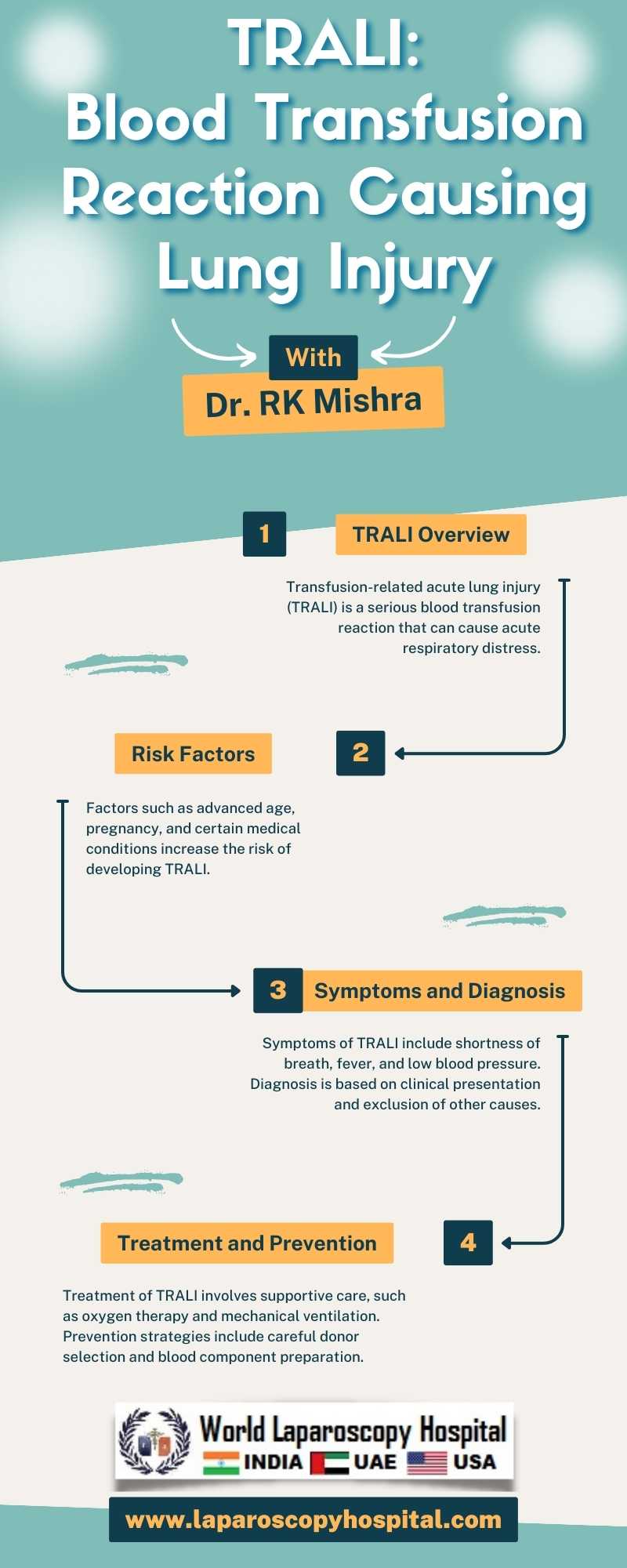Transfusion-Related Acute Lung Injury (TRALI) is a rare but serious complication of blood transfusion, characterized by the sudden onset of respiratory distress and non-cardiogenic pulmonary edema within six hours of transfusion. TRALI is a leading cause of transfusion-related fatalities and is often underdiagnosed or misdiagnosed due to its nonspecific clinical presentation.

TRALI typically occurs following the transfusion of blood products containing antibodies directed against recipient leukocytes, most commonly anti-human leukocyte antigen (HLA) and anti-human neutrophil antigen (HNA) antibodies. These antibodies can activate neutrophils and endothelial cells, leading to the release of inflammatory mediators and the disruption of the pulmonary endothelial barrier, resulting in pulmonary edema and respiratory compromise.
The clinical presentation of TRALI can vary from mild dyspnea to severe hypoxemia and respiratory failure requiring mechanical ventilation. Patients may also present with fever, hypotension, and frothy pulmonary secretions. Diagnosis is based on the presence of acute respiratory distress following transfusion, along with evidence of bilateral pulmonary infiltrates on chest imaging and no evidence of circulatory overload or other alternative causes of acute lung injury.
Management of TRALI involves supportive care, including oxygen therapy and mechanical ventilation as needed. Prompt recognition and treatment are essential to minimize morbidity and mortality. In severe cases, extracorporeal membrane oxygenation (ECMO) may be required to support gas exchange while the lungs heal.
Prevention of TRALI involves the use of blood products from donors with low levels of HLA and HNA antibodies, as well as the avoidance of unnecessary transfusions. Blood banks also screen donors for risk factors associated with TRALI, such as a history of pregnancy or transfusion.
Despite its relatively low incidence, TRALI remains a significant concern in transfusion medicine due to its high mortality rate, estimated at 5-10%. The exact pathophysiology of TRALI is not fully understood, but it is believed to involve a "two-hit" model, where the first hit is the presence of primed neutrophils in the recipient, and the second hit is the transfusion of blood products containing leukocyte antibodies.
Several risk factors have been identified for TRALI, including a history of multiple pregnancies, transfusions, and certain medical conditions such as sepsis and acute lung injury. It is essential for healthcare providers to recognize these risk factors and take appropriate precautions to minimize the risk of TRALI in susceptible patients.
In recent years, efforts have been made to reduce the incidence of TRALI through the implementation of strategies such as the use of male-only plasma for transfusion and the development of pathogen reduction technologies. These measures have been shown to be effective in reducing the incidence of TRALI and improving patient outcomes.
Conclusion:
TRALI is a potentially life-threatening complication of blood transfusion that requires prompt recognition and management. Healthcare providers should be aware of the risk factors and clinical presentation of TRALI to ensure timely intervention and improve patient outcomes.